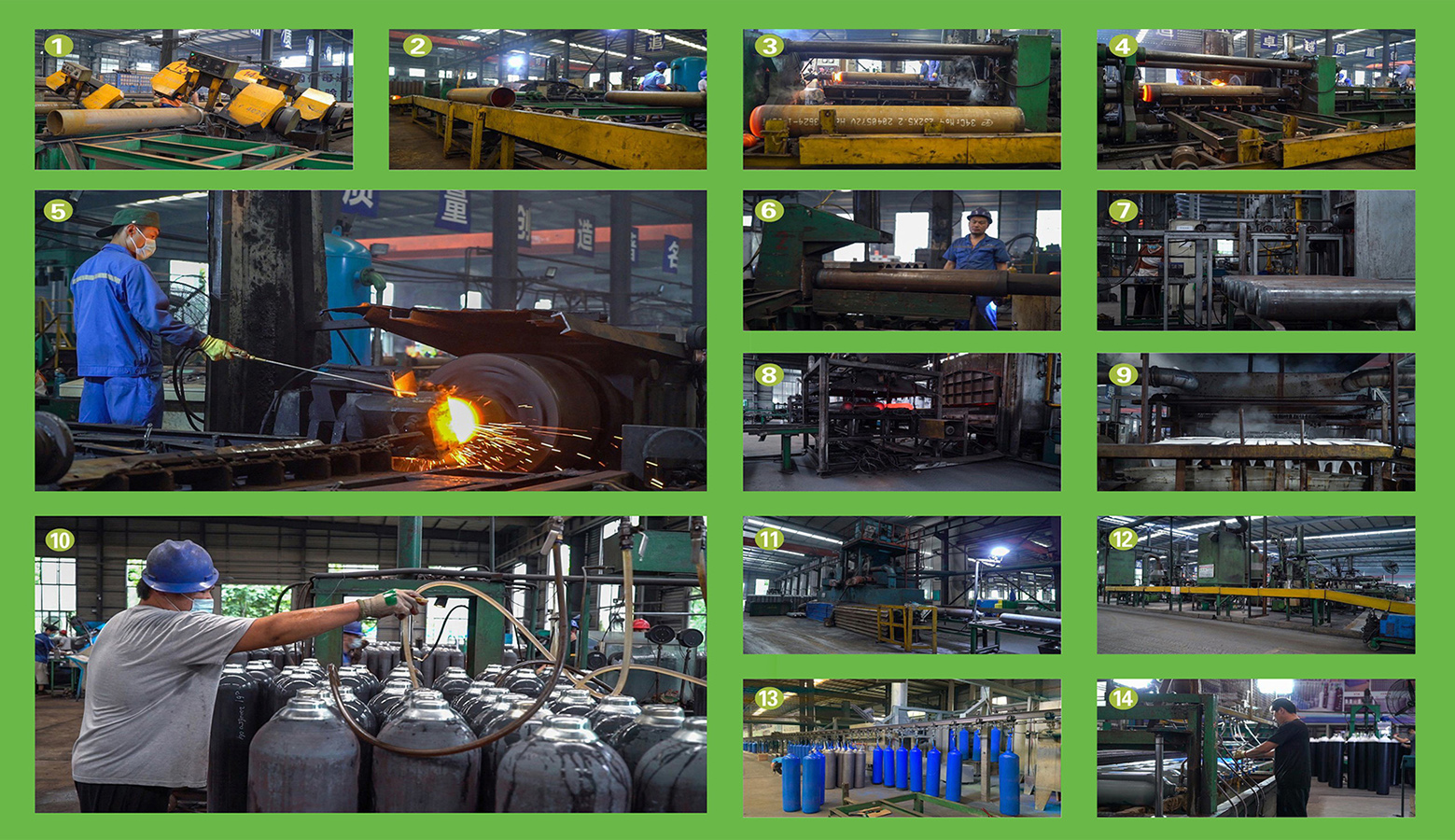Goal: high quality, reliable, worry-free.
ACCUMULATORS
A. Principle of Operation: When external energy increases, part of the energy is converted into the accumulator's internal energy (gas potential energy or spring potential energy). When external energy decreases, the internal energy supplements the external energy.
B. Classifications
• Gas-type
• Spring-type
• Piston-type
Main products: bladder accumulator, diaphragm accumulator, piston accumulator, stainless steel accumulator, pipeline accumulator, high-pressure accumulator, pulsation damper, shock accumulator, accumulator station, non-isolated accumulator, etc.
Standards include national standards, ASME, PED, etc.
C. Key Functions
a. Energy storage (leakage compensation, pressure maintenance)
b. Hydraulic shock absorption (component protection, accident prevention)
c. Pulsation damping (noise reduction, flow stabilization)
d. Energy recovery (efficiency improvement)
D. Application Fields
• Aerospace & military
• Robotics & automation
• Industrial sectors: chemical, metallurgy, oil / gas
• Transportation: road / rail / marine vehicles
• Heavy machinery: mining, engineering, marine
• Power generation: conventional/renewable
• Specialized equipment: papermaking, cement, agriculture
E. Bladder Accumulator Technology
a. Advantages
• Effective oil-gas isolation
• Quick response
• Easy maintenance
b. Limitations
• Shorter service life vs piston-type
• Capacity / pressure constraints
• Catastrophic failure risk upon rupture
c. Technological Innovations
1. Energy Conversion Medium
(1) Composite elastomer material (butyl rubber base with nano-silicate/carbon fiber) shows:
• 40 % ↑ tensile strength
• 35 % ↑ tear resistance
(2) Triple-layer structure:
• Inner: fluororubber (gas barrier)
• Middle: fiber-reinforced
• Outer: oil-resistant coating
Operating range: -40 °C to 120 °C
(3) Manufacturing breakthroughs:
• ± 0.15 mm wall thickness tolerance
• > 15 MPa metal-rubber bond strength
• 500,000 + cycles (2 × industry standard)
2. Adaptive Structures
• Multi-chamber designs (wind turbine applications)
• Pre-compression systems (30 % pressure reduction)
• Smart monitoring (98.5 % fault prediction accuracy)
3. Advanced Applications
• Wave energy converters (72 % efficiency)
• Aerospace (200 bar @ 40 % weight reduction)
• Arctic operations (-55 °C flexibility)
• Deep-sea systems (3,000 m depth capability)
4. Industry 4.0 and Accumulator Evolution
With Industry 4.0, accumulator airbags are evolving toward three key directions: functional integration, state visualization, and eco-friendly materials. Graphene-reinforced prototypes demonstrate a 2-million-cycle fatigue life in laboratory tests. Smart materials and micro-nano sensors will enable next-generation self-regulating systems, which will reshape hydraulic energy efficiency paradigms and support the green, intelligent manufacturing transformation.
F. Piston Accumulator Technology
a. Key Advantages
1. Extended service life
2. Simplified maintenance (seal replacement only)
3. User-friendly design:
• Easy installation
• Simple inflation
• Low maintenance requirements
4. Redundant sealing system
5. Enhanced capacity:
• Larger capacity
• Higher pressure tolerance (up to 230 °C)
6. Robust pressure fluctuation handling
7. Series connection capability
b. Technical Limitations
1. Suboptimal for:
• High-frequency cycles
• Low-pressure applications
2. Precision requirements:
• High-grade seals
• Machining tolerance < 0.01 mm
3. Trade-offs:
• 25 - 40 % heavier
• 2 - 3 × cost premium
G. Standard and Certification: ASME, DOT, DOT/UN ISO, TPED, CE, PED, UN ISO, EN ISO, UL, TC, AS/NZS, ISO (including ISO 9809-1, ISO 9809-2, ISO 9809-3), Rho, EN, CU-TR, EAC, GOST, KGS, KR, KSB, JIS B, KHK, CDG & TPE, IS, PESO, AS, AD, BS, PD, ADR/RID, GB, CLASSIFICATION SOCIETY STANDARDS (ABS, BV, KR, LR, DNV, GL, NK, RINA, RS, CCS, CFR)
Please click on the hyperlink to view: What is special about KAIGEN and LEO's ACCUMULATORS?


